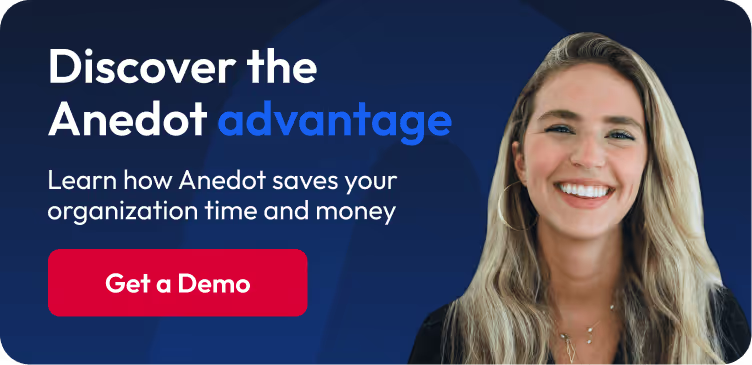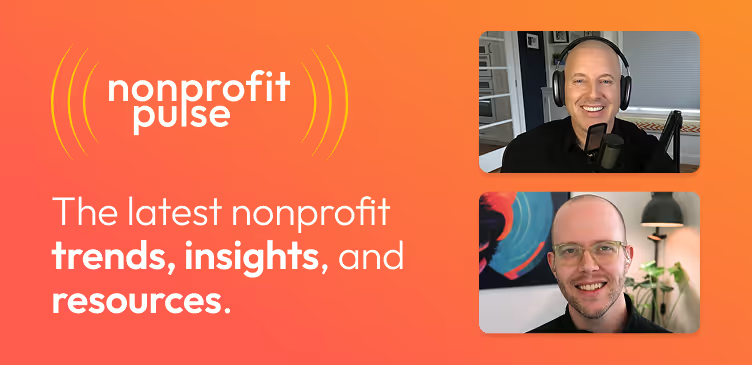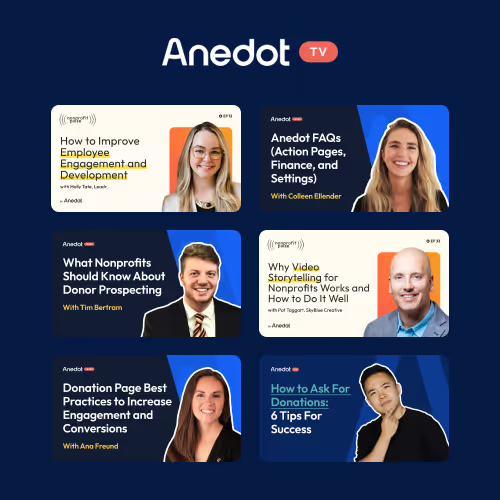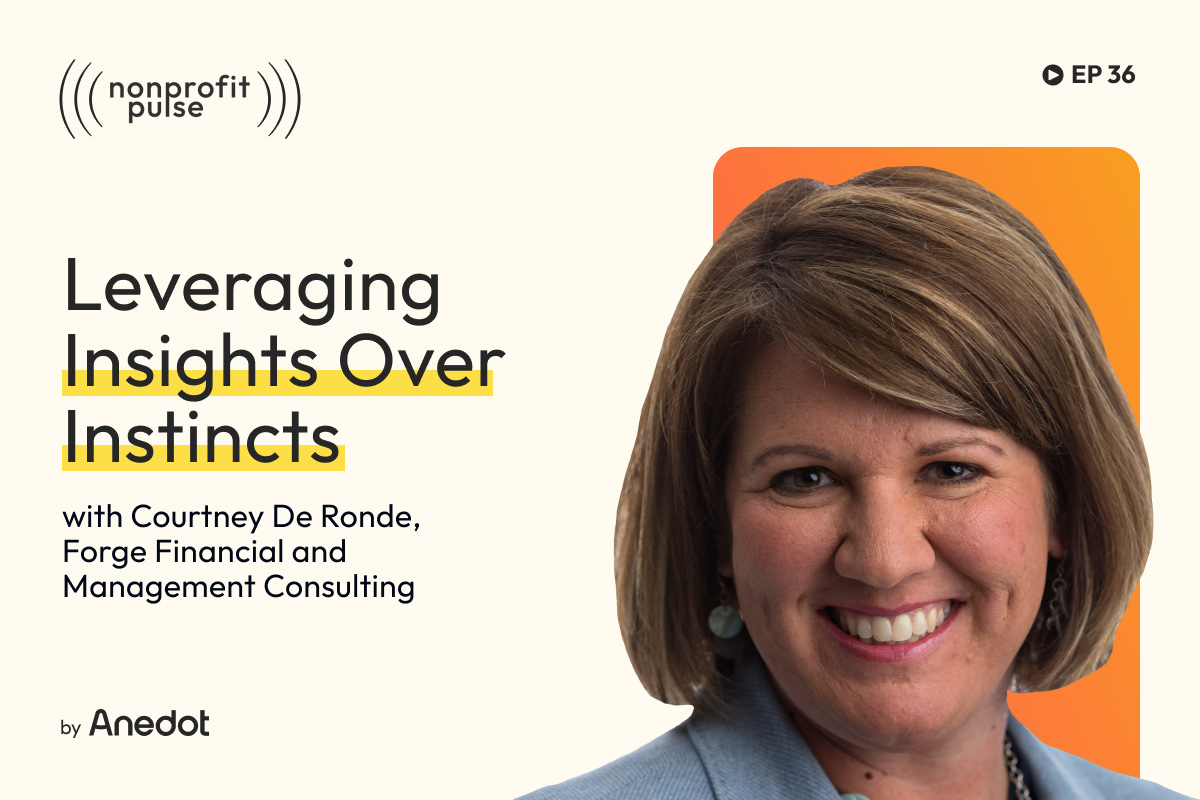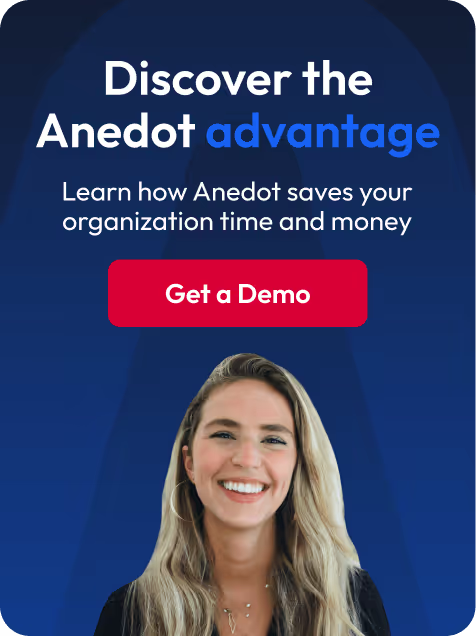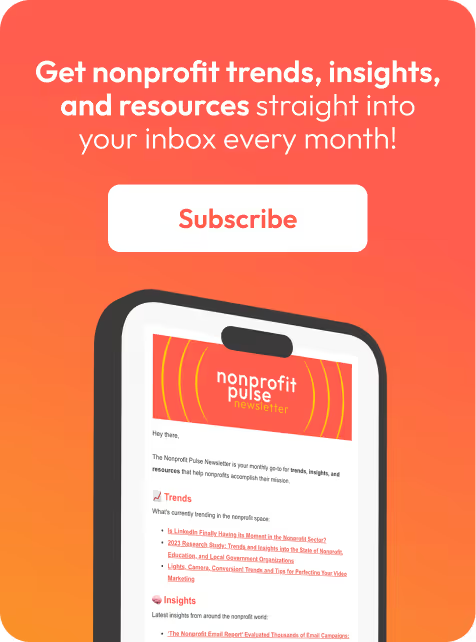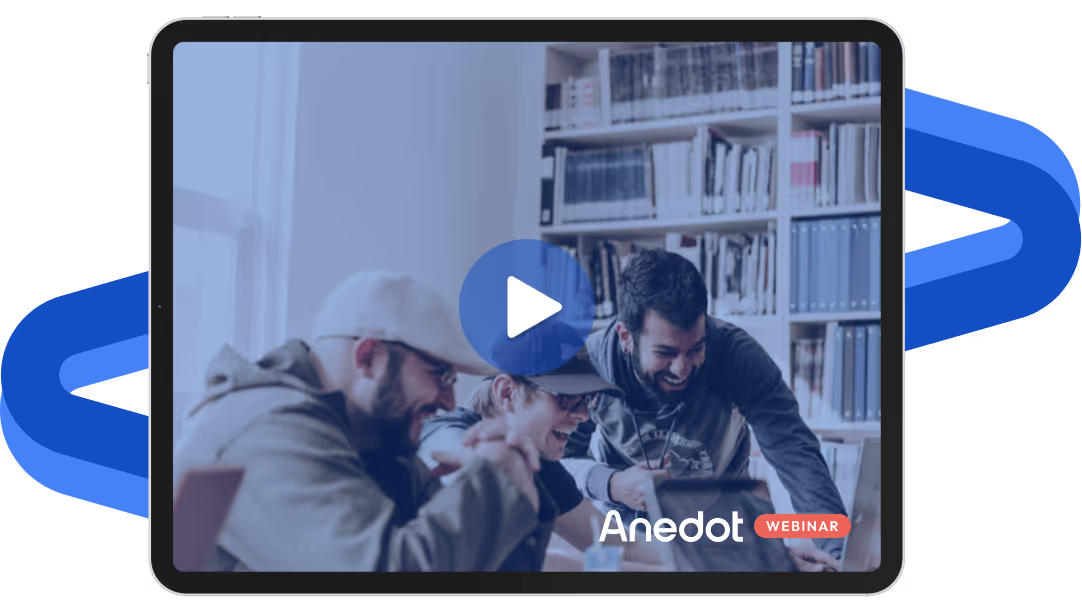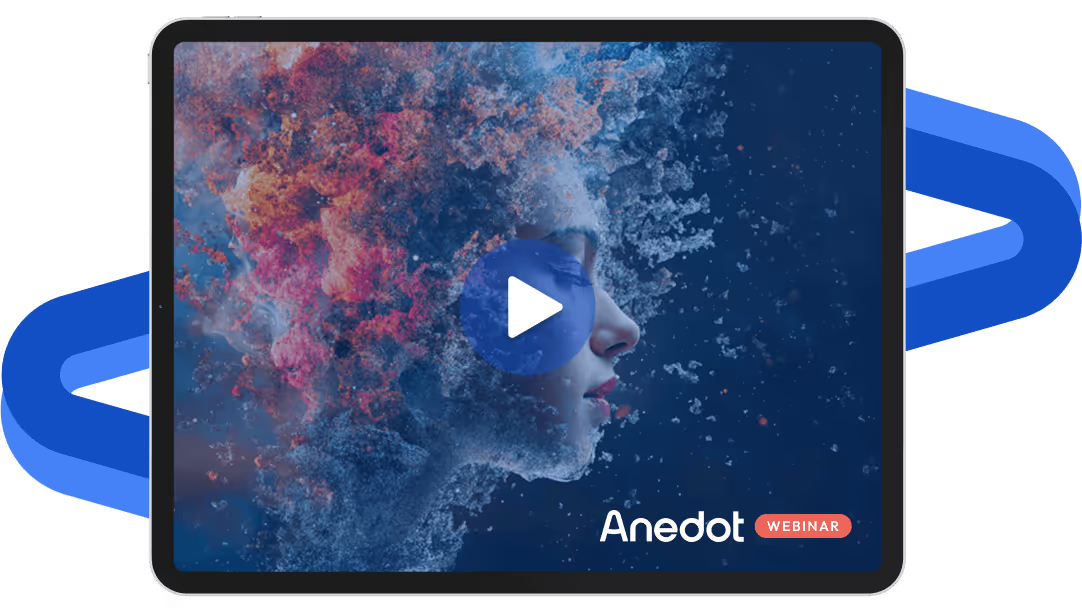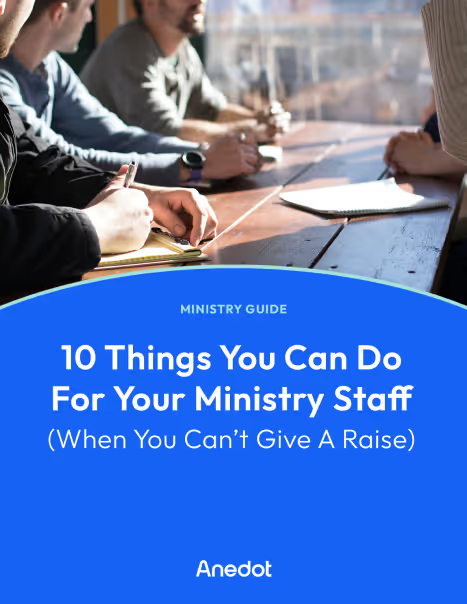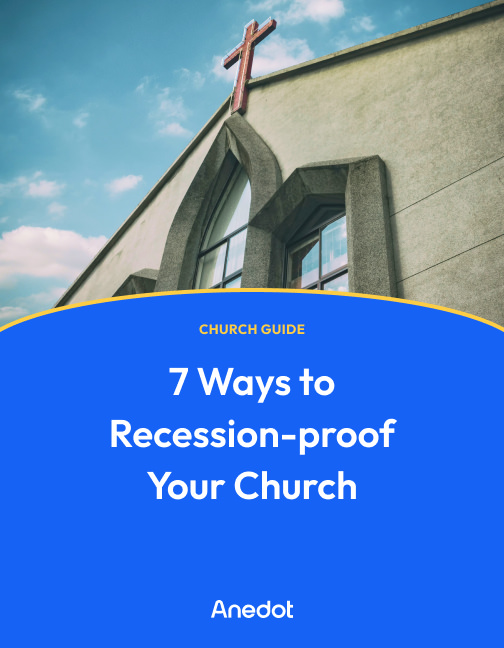Podcast episode transcript ↓
Josh:
Nonprofit leaders make countless decisions every day, but too often those choices are guided by guesswork.
The result? Missed opportunities, wasted resources, and weaker impact.
So, how can leaders break free from instinct alone? What would it take to base every decision on real insights? And where should nonprofits begin this transformation?
I’m Josh with Anedot, and welcome to Nonprofit Pulse, where we explore trends, insights, and resources that help nonprofits accomplish their mission.
On this episode, we’re joined by Courtney De Ronde to explore how insights can help nonprofit leaders move from instinct to smarter, more impactful decisions.
Courtney is the CEO of Forge Financial and Management Consulting, helping nonprofit leaders take charge of their development and fulfill their purpose.
With 20+ years as a CPA and 15 years as a business leader, she has firsthand experience running, scaling, and advising small businesses.
Today, she shares her expertise in leadership, finance, and productivity as a speaker and consultant.
Hi, Courtney, thanks for joining us on Nonprofit Pulse.
Courtney:
Hey, Josh, thanks for having me.
Why nonprofit leadership should move from instinct to insight in their decision-making

Josh:
Excited for our topic.
Today, we're going to be talking about leveraging insights over instincts and helping nonprofit leaders go from guesswork to greatness.
Maybe just starting out, Courtney, what first sparked your interest in helping nonprofits move beyond guesswork and towards using insights in their decision making?
Courtney:
Yeah, so I am a CPA by trade. I have an accounting degree. I started my career in public accounting, mostly auditing nonprofit organizations.
And one of the things I realized early in that journey, presenting audited financials to boards and leadership teams, was how transformational it could be when people started to understand what this information means about where their organization stands financially, the results of what they've been doing, how sustainable their programs may or may not be, what risks they have, and just being able to take something that I understood from a technical standpoint and translate it into meaningful operational insights, just really spark that desire me to continue providing that type of guidance, even beyond finance now.
And so but that's where it started, way back as an auditor of nonprofit organizations.
Josh:
Yeah, and I'm curious, why do you think so many nonprofit leaders rely heavily on their own instincts and gut feelings when making big decisions or even small decisions and what are the risks of that approach, as you've seen serving nonprofits over the years?
Courtney:
Yeah. So I think this happens across all organizations, not just in nonprofits, but we get to a certain level based on our gut or our instincts.
And that is really what I'm talking about there is our experiences and our emotions. And that usually serves us pretty well for a season.
It can then be deceiving that that is the way. We just trust our gut. We do what we think.
That usually works until you're trying to get to a new level, you're trying to launch a new program, you're trying to expand into a different geography.
You're trying to go somewhere that you don't have experience in, or you're relying on your emotions.
So your experiences are limited. Your emotions are pretty fickle.
And that's where we can start to get into this really be kind of blocked into getting any further is because what used to work for us, trusting our gut, relying on our experiences, relying on our emotions works for a while.
And I like to think of it, Josh, if we were trying to navigate around your neighborhood, we could trust your gut, right?
But if you were trying to make your way to me, here in Iowa, and you've never been here, trusting your gut, you might be able to get in the general vicinity, but you wouldn't have all of the right directions to navigate without information, intelligence, insights, either from me telling you more specifically or at least giving you a map.
So we need a map. We need a guide, if we're going to try to get somewhere we haven't been before.
But I think the reason people do that is just because it's effective in the beginning, because that's all you’ve got. And then eventually you outgrow it.
Josh:
Yeah, absolutely. And it makes me think of the phrase what got us here won't get us there.
And for so many nonprofits, I mean, that can be an era of years, from beginning, launching, to hiring your first staff, getting your first major gifts, establishing your first events or corporate partners.
It's kind of gut lead instincts, feelings. And then the complexity gets to the degree that all of a sudden the breadth is there, but the depth is not there. And, being effective in all those things really gets tough.
Courtney:
Absolutely. I think you're exactly right.
What happens when funding is cut and a nonprofit relies on insights instead of instinct

Josh:
So thinking about examples for our listeners, can you share an example of where guesswork led to a missed opportunity or a challenge for a nonprofit?
And what could have been different if data or insights had been used instead of just gut feeling?
Courtney:
Yeah. So one example is, when a funding source gets cut. So a lot of nonprofits are heavily reliant on governmental funds, different grants.
So we had a client whose governmental funding was significantly affected when the administration, new administration came in earlier this year. And their gut response was to kind of hunker down and think that it'll pass, it'll blow over.
What we helped them do before they decided to just ride out the storm or lay everybody off, because that's kind of what you can feel like, right?
In that emotional state is like, we've got to fire everybody, or we've got to stick our head in the sand and just hope that it'll all work out. And hope is a great virtue, but not a wonderful strategy, right?
So with this particular client, what we helped them do was model some different scenarios.
Best case scenario, better case scenario, worst case scenario based on their assumptions around what could possibly happen.
What if this, what if that and that started to give them information, insight, intelligence to support their decision making so that they weren't just trusting the executive director’s gut or the finance committees’ gut or the board chairs’ gut, because some of these people have had experiences like this in the past, but nobody's had an experience just like this one.
The details are different, the fact patterns are different.
And so being able to leverage information and intelligence to model different scenarios so they could support their decision making through insights and their gut.
We're not saying you have to ignore your gut, but you need to supplement it with additional information.
And so that allowed them to move forward with more confidence.
And, Josh, it gave them almost like trip wires of like, because of the different scenarios. So if this happens then now we're going down this path. If this doesn't happen, we're still going down this path.
So it kind of you crossed a certain threshold. Now we know what to do versus having no model, no insights, no support for decision making.
And then what are you doing? You're reacting based on your gut, heavily fueled by emotions.
And a lot of us don't have experiences for this type of thing ever happening to us before.
Josh:
Yeah. And I love the point about the threshold, because when you get to that point with a plan, with modeling, with a plan, once you get to that point, you can then look at your plan and say, okay, here's where we are.
Here's what we had talked about before. If we got to this point or if this scenario played out, rather than getting to that point, and you've been riddled with stress and anxiety for the past six months or a year, and now you're getting to that point and you don't even remember where you started six months or a year ago.
The vibes were totally different then. And now you're having to make this gut decision about it rather than just referring to the plan.
Here's what we decided. Here's what the modeling told us. It’s super helpful. Even if you don't use it.
Maybe you get to that point, you throw it out the window and say, no, we're going to go with our gut.
We feel this is going to be a very strong end of year. And so we're going to do X, Y, and Z. But at least you have it. And it can inform your decision making.
What it looks like in practice for a nonprofit to move from intuition to insights in decision making

Josh:
So thinking practically Courtney, what does it look like kind of practically for a nonprofit to shift from intuition driven decision making to insights driven leadership?
Courtney:
Yeah. So we really teach our clients that there's four areas of your organization that you need to focus on when you're trying to grow and scale to the next level.
So a lot of times, early on you're focused more on finding your donors, finding your programs.
Once you're established, that's pretty set.
Now you need to shift your focus to having insights and information in four core areas of the organization: finance, leadership, productivity, and human intelligence.
So each of those are areas of business intelligence, financial intelligence, leadership intelligence.
And you have to start feeding a system of information and insights through each of those four areas.
So let's take finance for example. You have to have reliable information. You have to have visibility on it.
And then you can start using predictability, modeling, forecasting, projections, what do you expect to happen, which allows you to then have flexibility when you compare what you thought would happen to what actually happens.
Now we can flex and pivot our plans and make these decisions.
So those four steps I just mentioned reliability, visibility, predictability, and flexibility are what we call the steps to scalability.
But they don't just apply to finance. The same thing is true in leadership, productivity, and human intelligence.
We have to have information about our people and our resources and how they're deployed, it has to be reliable.
We have to actually look at it and use it. We have to start predicting what we think can happen, how we can leverage these resources, and then we have to flex and pivot our plans when what we expected doesn’t align with what actually happens.
And so having this system that feeds you information and intelligence across these four areas, through that pyramid is how you very practically start to shift from just trusting your gut and relying on past experience and emotions to having actual information, insights, business intelligence that can help support your decision making.
How to track the right results without getting lost in numbers

Josh:
Love that. That's so helpful. And thinking about the data side of that, most nonprofit leaders, I would say, are overwhelmed by data, right?
They've got so many hats they're wearing. If you dropped a big folder of data on their desk, it would be overwhelming to them.
But at the same time, they also want to measure what matters, right?
They want to know this data set matters. What's happening over here matters. These other points really are irrelevant. Or they should be looked at with scrutiny.
What advice would you give to help nonprofit leaders really identify the right data to pay attention to and to measure what matters?
Courtney:
Yeah. So one of the tools that we work with clients on is called a results map. And so we start with top level results metrics, key performance indicators that are at the organization level.
So these are the top level metrics that are connected to their strategic plan, their big goals for the year. And then you map those down.
What are the different metrics that support leading into that? So let's just say that one of them is program profitability.
That's one of the the metrics that we're tracking is how profitable is this program. Not because we're generating profit and paying out shareholders, but because this is just our tax status.
We still have to generate margin from our programs to be able to sustain our purpose and our mission.
So let's just say it's program profitability. That's a top level metric. Well, what role within the organization is responsible for that?
Well, maybe it's the director of that program. And then what are some of the leading measures that that program director’s team need to be accountable for?
And you just start mapping all of these top level results down through the supporting results and mapping them to which roles within the organization need to be accountable for them.
That then allows you to create dashboards and job descriptions that connect to results, so that you shift from having all of your different team members focus on executing tasks.
Instead, they're focused on achieving outcomes.
But oftentimes we have never set what those outcomes are, so we don't know what to put in our dashboard.
And we end up with what you said, all kinds of information and it doesn’t connect to what we're really trying to do this year, this decade, what's our vision, what's our goals for this next year.
So using our results map that starts with those big picture outcomes gets them down into more granular metrics, maps them to different people's jobs, their actual roles within the organization allows you to then put things on certain dashboards that certain leaders have accountability for measuring and maintaining.
So you're not responsible for everything.
Josh:
Yeah. That's helpful. And it makes me think about some of the common roles you'll see out there for nonprofit organizations like, a development manager or the director of development or a social media director.
And, I've seen it online through different boards and social media sites where there's a lot of frustration around people applying to these roles and there's no, expectations in the job description around what they're expected to do, as far as, increase annual giving by 3%, by 10%, increase social engagement and brand awareness by 10%.
There's usually nothing there. And what you just mentioned is exactly why we need nonprofits to move from guesswork to greatness, as you put it, and leverage insights over instincts, because even the employees who are wanting to go join a nonprofit, join that mission and make a big splash, they need to understand what's expected of them, so they understand the challenge and that they can then meet that challenge or even exceed that.
Courtney:
Yeah. It's a great way to help people connect to your mission and get the return on your investment in their salary, their benefits, their training, any coaching or development you provide for them.
Because we're starting to connect people's role to the results we need from them.
Sometimes as leaders, maybe we haven't even thought that far about what the results are. We're hoping. Great virtue, not a great strategy. We're hoping that they'll somehow catch it, and that by launching this campaign, it will just achieve what we want it to achieve. But we haven't really ever spelled out what results we want this campaign to achieve.
And so our team member who we hire, we pay, we leverage their time, their energy.
They launch a campaign and it's done. We did it. Well, did we raise the funds we needed to raise?
Is the amount that's unrestricted, what we need to be unrestricted or is it all restricted? Did we get what we needed?
Maybe not because we never really clarified that up front. And nobody was monitoring those results. They were just executing tasks and activities that didn't connect to certain results.
How nonprofits can leverage reliable insights to improve fundraising, donor engagement, and volunteer management

Josh:
Moving from that, doing and hoping to achieving and measuring. It's such a helpful topic. I'm so glad you're here.
Okay, so thinking about fundraising in particular, maybe share with our audience, some practical ways that nonprofits can leverage insights that they have now to improve their fundraising strategies or donor engagement, especially in this really challenging fundraising environment we're in now with federal cuts, with more and more nonprofits fighting over the same, same donors and same dollars.
What are some practical ways or ways you could share around leveraging insights for that?
Courtney:
Yeah. So really you want to develop a strategy that you're starting with accurate, reliable, timely information.
So that pyramid again it starts with reliability. So sometimes what happens is we have access to all this information. We have visibility on it and we start using it.
But we don't know if it's really reliable.
So first before you're taking any kind of data, whether it's fundraising or otherwise, you need to make sure that it's coming from a reliable source. Is it timely? Is it accurate? Is it relevant to who we are? And if we shortcut this step, each step after that, looking at it, using it, modeling it is totally worthless.
So take the time first to make sure that whatever information you're gathering, whether you've purchased it, whether you've hired a consultant, the map, the guide, whatever method you're using to gather this information and intelligence.
Take this first step to make sure it's really reliable to you.
Josh:
So the small dollar campaign, which is the only one we ran six years ago, that data you're telling me is not that helpful?
Courtney:
Probably not. Unless you're doing something exactly the same again. And chances are you're not.
And so making sure that you're using reliable information, even if you have to purchase it or you have to pay someone to make sure that it is what you need, that will be worth more than going too far down this path, leveraging information that isn't reliable.
And so sometimes what people do. So we have this, business intelligence grader. It's a free assessment. And we can share it with your listeners.
They can certainly check it out. So it measures across those four different areas finance, leadership, productivity, and human intelligence.
It measures where you're at on these steps to scalability, reliability, visibility, predictability, flexibility across all four areas.
So sometimes people's results will come back. They have a ton of flexibility in let's say, productivity, the way that they leverage resources.
And my team will say, well, how can somebody have so much flexibility? Top of the pyramid, but so little reliability? It's because they're comfortable trusting their gut.
They're willing to flex and pivot and adjust and adapt, but they're doing it without any reliable information. And so then we're back into the same cycle that we've been talking about right?
So really focusing on we're gathering the right kind of information that's relevant to what we're doing.
It's accurate, it's timely. Then we need to use it. We need to get it visible. We need to get it in a format that we can actually leverage.
Again, this might require some help, might require the use of AI.
It might require an analyst. But we need to take this data and get it into a format that we can actually leverage because it's visible to us.
And then that gets us to the next step of modeling with predictability and then flexibility. But it all starts. And I think sometimes people miss this step.
It's like you said, they're pulling information from what we did six years ago.
That might be a completely different environment, a completely different result that we're going for, or we're using somebody else's experience that's totally different than ours. And so we can't rely on this information.
Josh:
So thinking beyond fundraising, what are some maybe overlooked areas where insights can have a major impact?
I'm thinking of volunteer management, program design, or community outreach.
Courtney:
Yeah. So well, let's take volunteer management or team member engagement.
Okay. So like you as a nonprofit, a lot of times you're providing services. So the bulk of your costs are employee salaries and benefits.
Or you have a significant volunteer base that you're trying to engage in your mission and retain because it's expensive to train new people to get them connected and excited about your mission.
So sometimes we will trust our gut on how engaged are our people? Do they understand our mission? Do they like it here? Would they refer somebody else to volunteer here? Would they refer someone else to work here?
A way that you can gather information and intelligence in this area is through surveys. So you can start to pulse survey your team or your volunteer base.
Just quick 1 or 2 question surveys here and there. We don't want to over survey them. You might do a bigger survey once a year that's a little bit more extensive.
And then you start to get this first hand information from your people. Are they engaged? Do they understand your mission? Do they feel connected to it? Would they refer somebody else to work here or to volunteer here?
That is an example of how you can gather information that's much more reliable than just one off anecdotes here or there from some of your leaders or your coordinators, because they don't have the full picture.
And so using surveys, gathering that information, analyzing it, looking at it, parsing it down, maybe this particular location or this particular program has stronger engagement.
This one has lower. And you can start to dig in and see, is it because of the leader? Is it because of the physical environment?
Is it because we don't have as strong of communication and meeting cadences?
You can start to actually uncover what's happening instead of just relying on anecdotes or what you think might be going on.
→ Use our free survey maker to build questionnaires for your supporters and receive valuable feedback.
How nonprofit leaders can build a culture that values learning and insights without stifling creativity

Josh:
So thinking about the culture side of this, which is also a big topic and challenging throughout the year, whether you're leaning into different new hires or trying to shift a culture at an older or established nonprofit, how can nonprofit leaders really build a culture that values learning and values insights without stifling creativity or mission driven passion?
Courtney:
Yeah, this is a great question because the challenge with systematizing things is that you risk losing innovation.
And when we've overemphasized innovation, we might never systematize anything. So you have to find this balance, right?
We have actually a whole two day workshop just on this topic. It's called Calm the Chaos.
But it's all about this balance of how do you put systems in place that allow us to leverage consistent client, customer, consumer experience results from us, because we've got enough systems in place that it's not all relying on specific individuals who have been there for 30 years and know exactly what to do.
We've got systems where we can leverage different people, but we also have enough flexibility that we can adapt, we can innovate, we can problem solve to make sure that we're doing that.
So I think this comes really heavily in the way that you help to lead your team members.
So as leaders, from the executive level down to program management, have a culture that values these different gifts and abilities around innovation and systemization, having core values that spell out that these are both relevant and valuable, and recognizing that the human intelligence side of things says that each person has unique gifts, talents, and abilities.
And some people are wired to systematize and some people are wired to adapt. And we need both.
But we need to know the context in which we need them. And we need to not try to put a systematizer into a role that requires them to constantly adapt, and vice versa.
But that requires people understanding their own strengths and gifts, us as leaders understanding those strengths and gifts, and then leveraging them appropriately to have diversity of gifts and strengths, but also deploying them in those ways.
So having both as part of your values and the actual hard skills and abilities within your team.
The first step nonprofit leaders can take to move from gut instincts to insights

Josh:
So thinking of our listeners now, and those who want to take a first step towards kind of moving from instinct and gut feelings over to insights, what would you tell them to do maybe even first thing tomorrow?
What would your advice be to them?
Courtney:
Yeah. So I really think getting visibility on where you're at in this journey is a great first step.
So that business intelligence grader that I mentioned that's our free assessment. It takes probably 10 or 15 minutes.
And you're going to self-assess where you're at in each of those four areas of business. And through those four steps of scalability.
You're going to answer these questions so that you can determine where do you not have systems, processes, steps in place within your organization.
You might have this really locked in in financial intelligence, but you might see that in leadership intelligence, we are totally trusting our gut and we answer those questions.
If you just kind of flip it around and say, well, if I don't have this, having this is the path to having information intelligence in this area.
But the whole report will kind of give you that guidance where you are strong, where you need to start?
But I think it first starts with just an open, honest self-assessment using our free business intelligence grader is a great place to start.
Closing thoughts

Josh:
Awesome, awesome. And thinking more about resources.
Any resources out there, Courtney, beyond that tool that you would recommend to our audience?
Courtney:
Yeah, we also have a free e-book, that walks you through our entire system.
So our framework is called the Simple ScaleUp System and it explains everything that we've talked about already today, Josh.
Plus some more very practical steps, a whole list of tools, things that you would need if you were going to try to start implementing a system of business intelligence within your organization and so your listeners are welcome to download that e-book as well.
So the business intelligence grader is at assessments.forgeahead.com.
And the e-book is at forgeahead.com/ebook.
So both of those are free tools that will get you some good information about all the things we talked about today.
Josh:
Awesome awesome. And as always for our listeners, if you want to learn more about Courtney, grab these links to these resources, head on over to Nonprofitpulse.com for the show notes, and you'll find everything there.
Courtney, this has been so helpful. My favorite question of every episode is our last question.
And that's because it requires the guest to to think in very, slim, thin, pithy ways. So let me ask the question.
If you were standing on stage in front of a thousand nonprofit leaders and could share one thing with them, one sentence, about today's topic, what would you say?
Courtney:
I would say it doesn't have to be this way.
If you feel like you're stuck trusting your gut and paralyzed by all the decisions that you need to make within your organization, it doesn't have to be that way. You can build a system of intelligence that will support your decision making and make your instincts continuously better and more valuable as you go.
Josh:
Love it. Love it, and this is the perfect time of year to take that next step.
You've got all of 2025 data to look at, to make decisions, to get modeling. This is the time to take action.
So again, Courtney, thanks so much for joining us. I hope many people reach out to you to learn more.
Courtney:
Thanks so much for having me, Josh. Appreciate it.
Josh:
Hey, thanks for listening.
If you enjoyed this conversation, please share or leave us a rating and review wherever you listen to podcasts.
Also, head on over to Nonprofitpulse.com to sign up for our monthly newsletter, as well as check out all the links and resources in the show notes. We’ll see you next time.
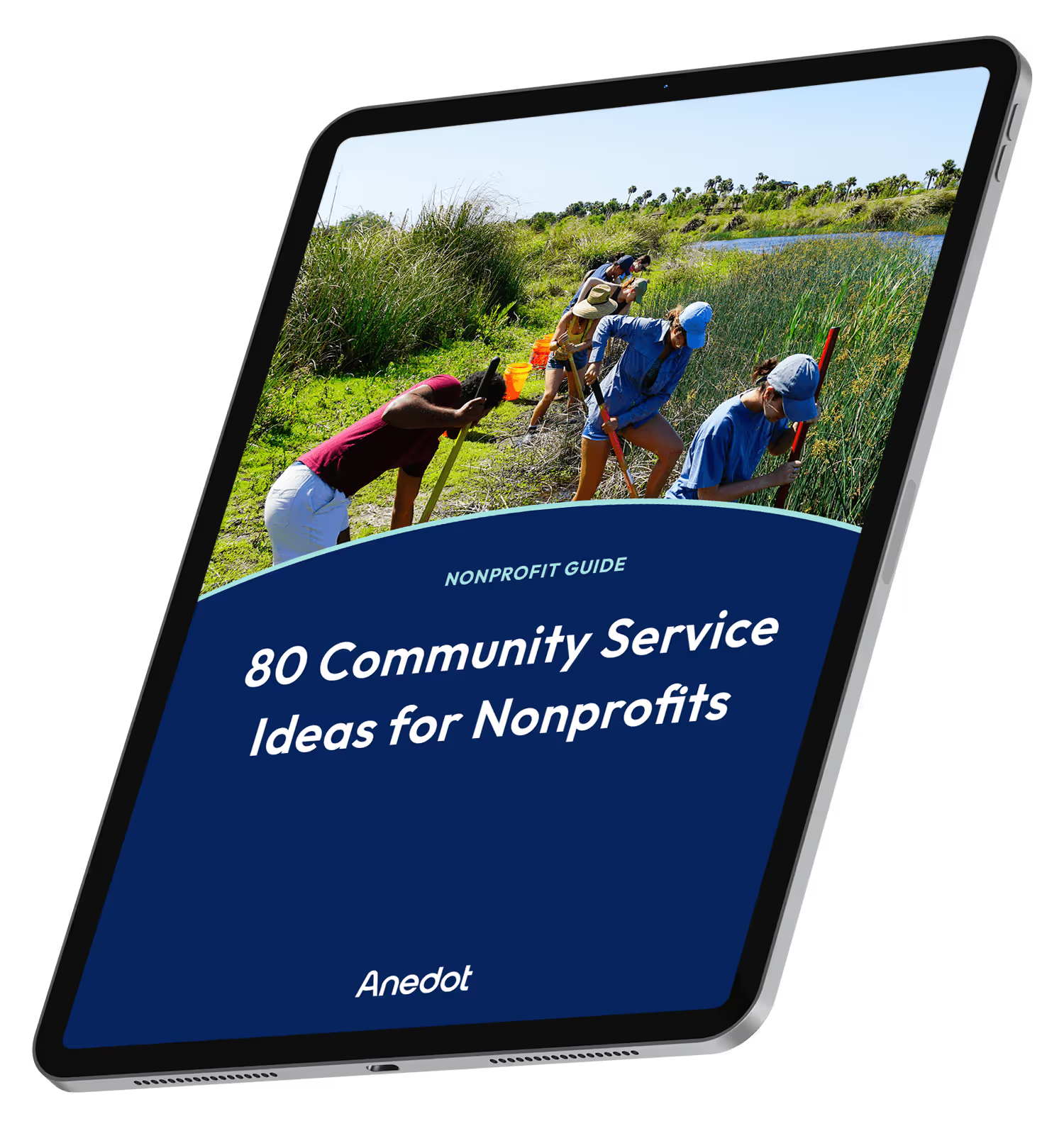
80 Community Service Ideas for Nonprofits
